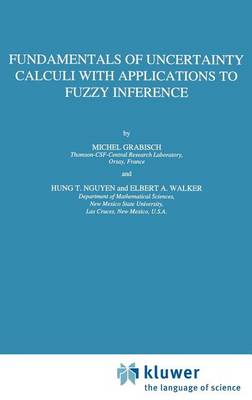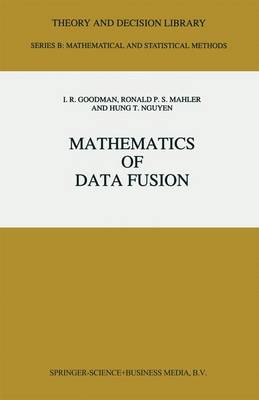Theory and Decision Library B
3 primary works
Book 30
Fundamentals of Uncertainty Calculi with Applications to Fuzzy Inference
by Michel Grabisch, Hung T Nguyen, and E a Walker
Published 30 November 1994
With the vision that machines can be rendered smarter, we have witnessed for more than a decade tremendous engineering efforts to implement intelligent sys tems. These attempts involve emulating human reasoning, and researchers have tried to model such reasoning from various points of view. But we know precious little about human reasoning processes, learning mechanisms and the like, and in particular about reasoning with limited, imprecise knowledge. In a sense, intelligent systems are machines which use the most general form of human knowledge together with human reasoning capability to reach decisions. Thus the general problem of reasoning with knowledge is the core of design methodology. The attempt to use human knowledge in its most natural sense, that is, through linguistic descriptions, is novel and controversial. The novelty lies in the recognition of a new type of un certainty, namely fuzziness in natural language, and the controversality lies in the mathematical modeling process. As R. Bellman [7] once said, decision making under uncertainty is one of the attributes of human intelligence. When uncertainty is understood as the impossi bility to predict occurrences of events, the context is familiar to statisticians. As such, efforts to use probability theory as an essential tool for building intelligent systems have been pursued (Pearl [203], Neapolitan [182)). The methodology seems alright if the uncertain knowledge in a given problem can be modeled as probability measures.
Book 34
This text is an Elementary Introduction to Stochastic Processes in discrete and continuous time with an initiation of the statistical inference. The material is standard and classical for a first course in Stochastic Processes at the senior/graduate level (lessons 1-12). To provide students with a view of statistics of stochastic processes, three lessons (13-15) were added. These lessons can be either optional or serve as an introduction to statistical inference with dependent observations. Several points of this text need to be elaborated, (1) The pedagogy is somewhat obvious. Since this text is designed for a one semester course, each lesson can be covered in one week or so. Having in mind a mixed audience of students from different departments (Math ematics, Statistics, Economics, Engineering, etc.) we have presented the material in each lesson in the most simple way, with emphasis on moti vation of concepts, aspects of applications and computational procedures. Basically, we try to explain to beginners questions such as "What is the topic in this lesson?" "Why this topic?", "How to study this topic math ematically?". The exercises at the end of each lesson will deepen the stu dents' understanding of the material, and test their ability to carry out basic computations. Exercises with an asterisk are optional (difficult) and might not be suitable for homework, but should provide food for thought.
Book 37
Data fusion or information fusion are names which have been primarily assigned to military-oriented problems. In military applications, typical data fusion problems are: multisensor, multitarget detection, object identification, tracking, threat assessment, mission assessment and mission planning, among many others. However, it is clear that the basic underlying concepts underlying such fusion procedures can often be used in nonmilitary applications as well. The purpose of this book is twofold: First, to point out present gaps in the way data fusion problems are conceptually treated. Second, to address this issue by exhibiting mathematical tools which treat combination of evidence in the presence of uncertainty in a more systematic and comprehensive way. These techniques are based essentially on two novel ideas relating to probability theory: the newly developed fields of random set theory and conditional and relational event algebra.
This volume is intended to be both an update on research progress on data fusion and an introduction to potentially powerful new techniques: fuzzy logic, random set theory, and conditional and relational event algebra.
Audience: This volume can be used as a reference book for researchers and practitioners in data fusion or expert systems theory, or for graduate students as text for a research seminar or graduate level course.
This volume is intended to be both an update on research progress on data fusion and an introduction to potentially powerful new techniques: fuzzy logic, random set theory, and conditional and relational event algebra.
Audience: This volume can be used as a reference book for researchers and practitioners in data fusion or expert systems theory, or for graduate students as text for a research seminar or graduate level course.


